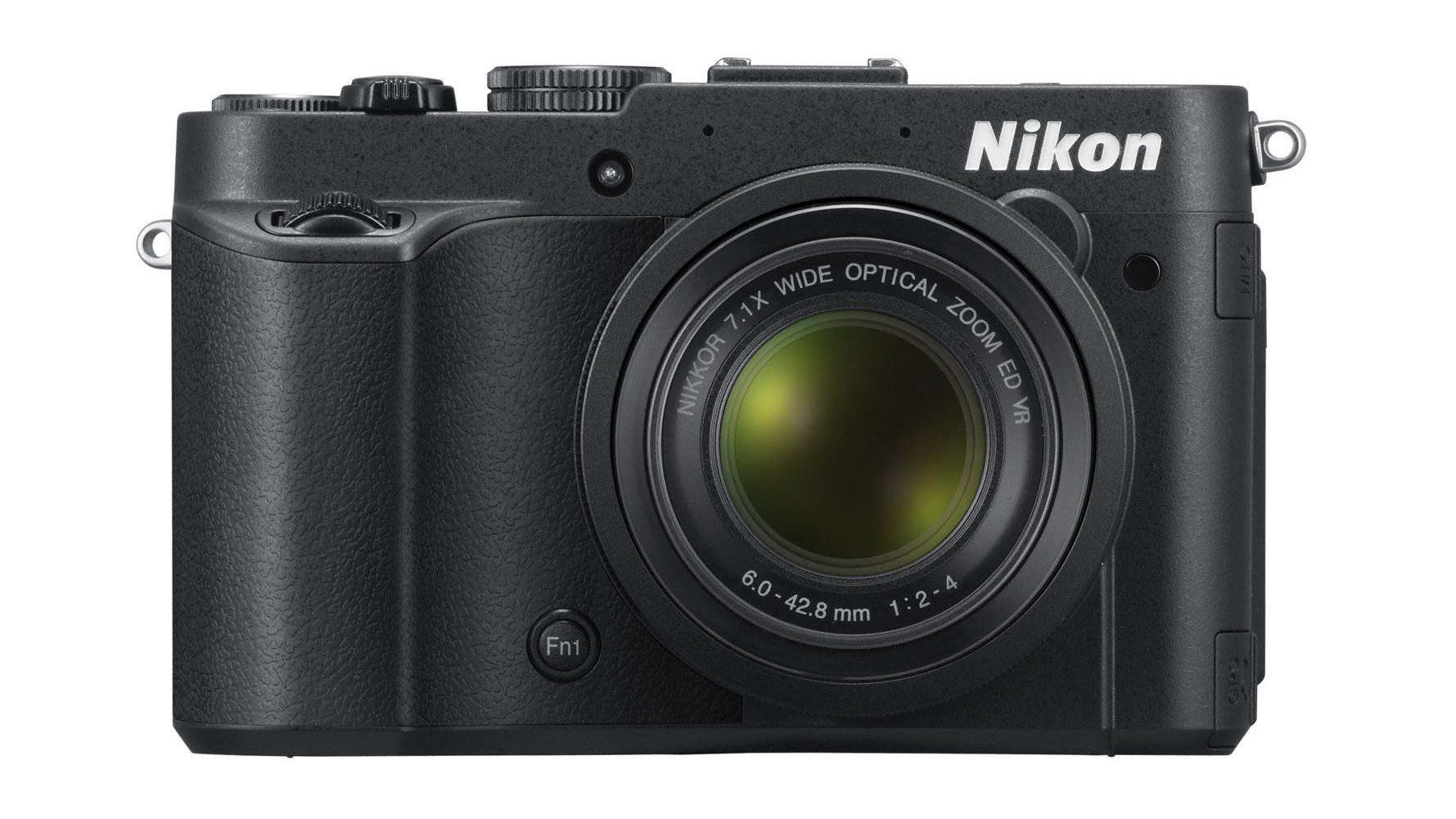Why you can trust TechRadar
We shoot a specially designed chart in carefully controlled conditions and the resulting images are analysed using DXO Analyzer software to generate the data to produce the graphs below.
A high signal to noise ratio (SNR) indicates a cleaner and better quality image.
For more more details on how to interpret our test data, check out our full explanation of our noise and dynamic range tests.
JPEG signal to noise ratio
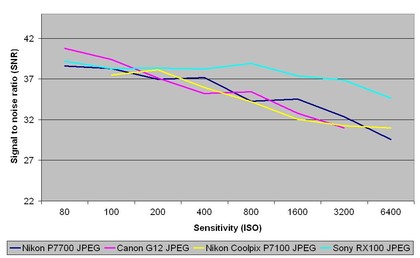
JPEG images from the Nikon P7700 are similar to those from the Canon G12 and Nikon P7100 for signal to noise ratio, while the Sony RX100 produces stronger results at every sensitivity setting.
Raw signal to noise ratio
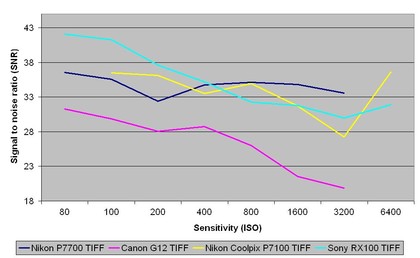
In contrast, the signal to noise ratio scores for raw images are more spread out, with the Nikon P7700's raw images most like the Nikon P7100's between ISO 100 and 800, after which point the newer camera takes the lead. The P7700's images consistently beat the Canon G12's for signal to noise ratio throughout the sensitivity range. They fall below the Sony RX100's again at low sensitivities, before then taking the lead and holding it from ISO 400 onwards.
JPEG dynamic range
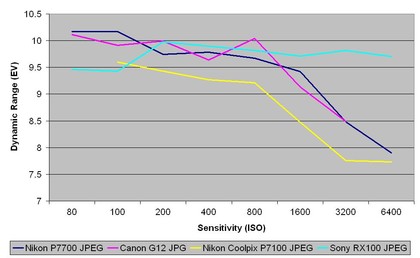
For dynamic range, JPEG images from the Nikon P7700 sit firmly in the middle of the scoreboard. They start off stronger than all the cameras' and stay stronger than the Nikon P7100's images at all ISOs. The Sony RX100's images are once again the strongest after ISO 200. And Canon G12's results are most similar, so that second and third place interchange at each new ISO setting.
Raw dynamic range
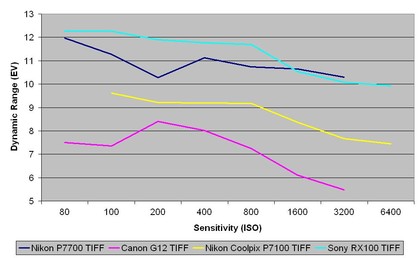
Again, the results of the raw images are more spread out than those of the JPEG images. And again, the Sony RX100 produces the greatest dynamic range of the lot, apart from at ISO 1600-3200, where the Sony and the Nikon P7700 are almost on a par. The Nikon P7100's images show the third best dynamic range, and the Canon G12's results are the weakest, throughout the sensitivity range.
Sign up for breaking news, reviews, opinion, top tech deals, and more.
Current page: Noise and dynamic range
Prev Page Image quality and resolution Next Page Sample images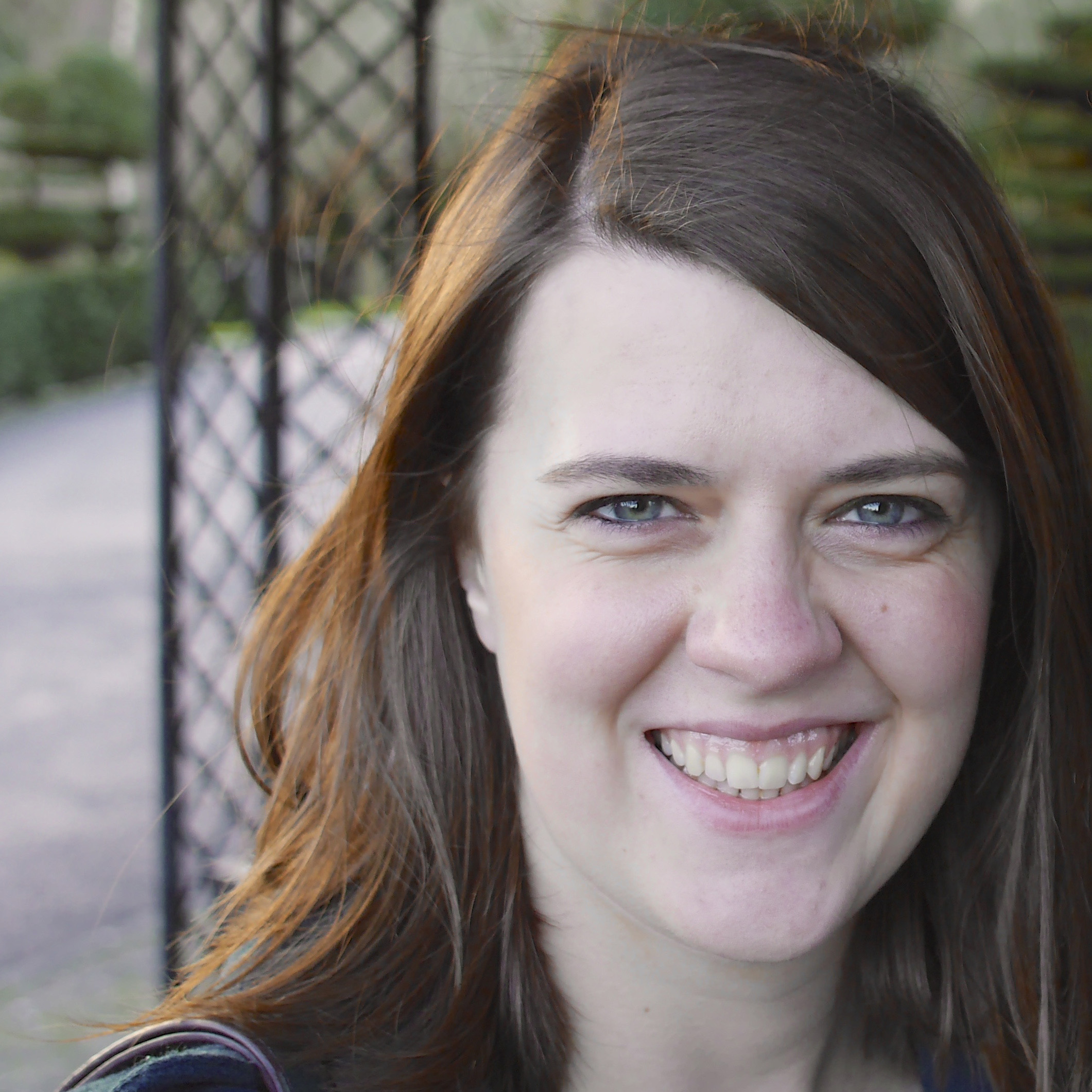
Amy has been writing about cameras, photography and associated tech since 2009. Amy was once part of the photography testing team for Future Publishing working across TechRadar, Digital Camera, PhotoPlus, N Photo and Photography Week. For her photography, she has won awards and has been exhibited. She often partakes in unusual projects - including one intense year where she used a different camera every single day. Amy is currently the Features Editor at Amateur Photographer magazine, and in her increasingly little spare time works across a number of high-profile publications including Wired, Stuff, Digital Camera World, Expert Reviews, and just a little off-tangent, PetsRadar.
